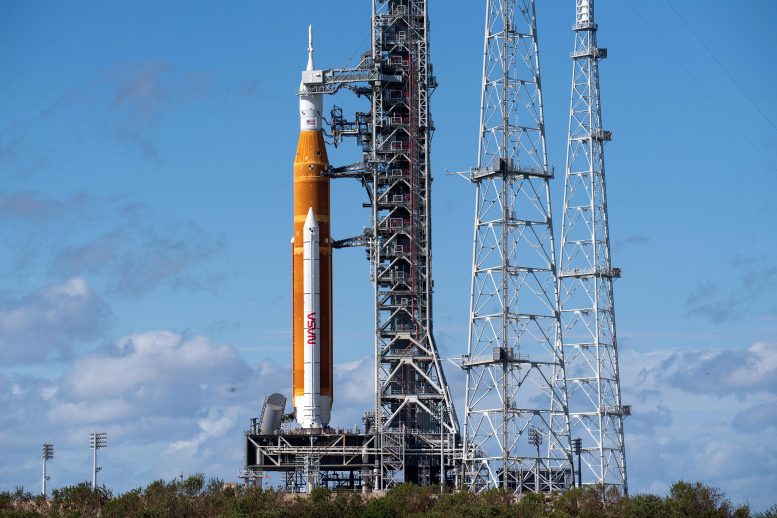
NASA’s Space Launch System (SLS) rocket with the Orion spacecraft aboard is seen atop the mobile launcher at Launch Pad 39B, Friday, November 11, 2022, at NASA’s Kennedy Space Center in Florida. Teams began walkdowns and inspections at the pad to assess the status of the rocket and spacecraft after the passage of Hurricane Nicole. NASA’s Artemis I flight test is the first integrated test of the agency’s deep space exploration systems: the Orion spacecraft, SLS rocket, and supporting ground systems. Launch of the uncrewed flight test is targeted for no earlier than November 16 at 1:04 a.m. EST. Credit: NASA/Joel Kowsky
NASA continues to target Wednesday, November 16 at 1:04 a.m. EST for the launch of its Artemis I mission from the agency’s Kennedy Space Center in Florida. There is a two-hour launch window for NASA’s first integrated flight test of its powerful Space Launch System (SLS) rocket and Orion spacecraft.
Beginning Thursday evening, teams conducted thorough assessments at Launch Complex 39B, closely inspecting SLS, Orion, mobile launcher, and other pad-related assets. They confirmed that there were no significant impacts from Hurricane Nicole, which made landfall more than 70 miles (110 km) south of the launch pad. The physical inspections supplemented remote monitoring using sensors and high-resolution cameras performed during the storm by a team in a safe location at Kennedy Space Center.
Update on our #Artemis I mission: pic.twitter.com/7F6brN86KF
— Jim Free (@JimFree) November 10, 2022
Space Launch System engineers have performed a detailed analysis to confirm the sustained and peak winds experienced during the storm have no negative effect on the structural strength of the rocket. Varying peak winds were measured by sensors at different heights at the pad, and all measurements remained below 75% of SLS design limits. Notably, these design limits are also intentionally conservative. Data from testing with actual hardware during the structural test series and modal testing (see infographic below), as well as other evaluations and modeling, provide confidence there is margin beyond the design ratings.
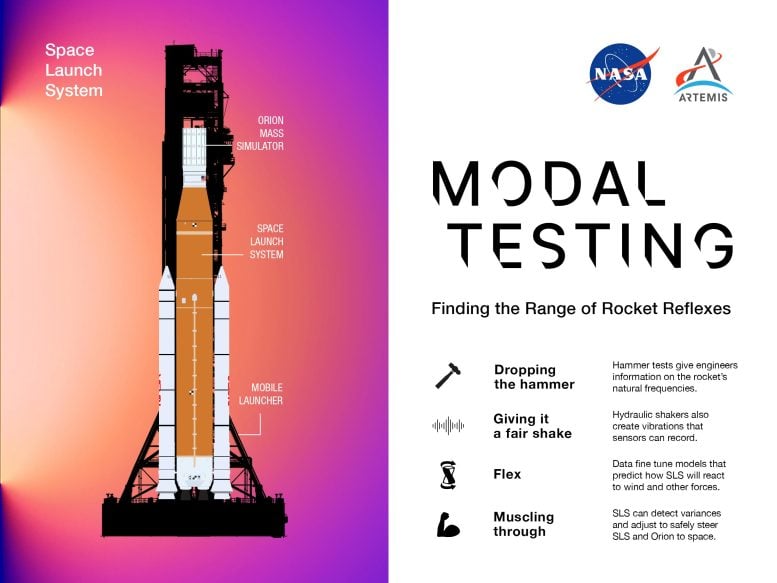
Before NASA’s Space Launch System (SLS) launches the Artemis I mission to the Moon, teams inside the Vehicle Assembly Building at NASA’s Kennedy Space Center in Florida conducted a series of tests to determine the deep space rocket’s reflexes. During launch and flight, SLS will experience and react to a series of frequencies and vibrations. Engineers conduct integrated modal testing to determine the full range of these frequencies and vibrations so that the flight software and navigation systems can safely guide the rocket through launch and ascent. To do that, technicians use a test version of the Orion stage adapter and Orion mass simulator to determine the natural frequencies, flexes, and vibration patterns of the SLS rocket. Credit: NASA
Technicians also are working to fix several minor items from the storm. Most repairs involve loose caulk or weather coverings. An umbilical used to provide purge air, or proper environmental conditions to the Orion spacecraft, was out of position. The umbilical maintained purge throughout the storm and has been repositioned to allow proper retraction at liftoff. Engineers have also removed the hard cover over the launch abort system window installed before the storm and will inspect the window to confirm it is in good condition for launch.
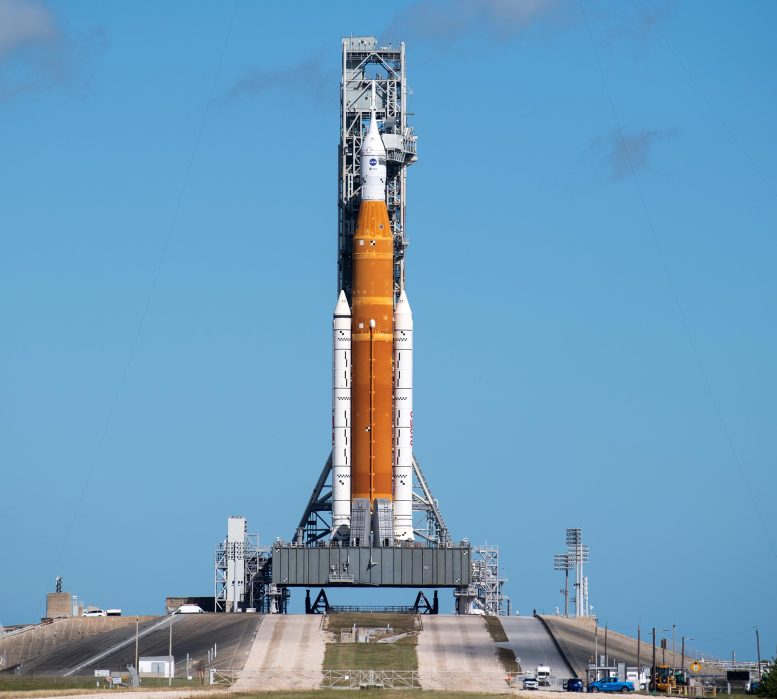
NASA’s Space Launch System (SLS) rocket with the Orion spacecraft aboard is seen atop the mobile launcher at Launch Pad 39B, Friday, November 11, 2022, at NASA’s Kennedy Space Center in Florida. NASA’s Artemis I flight test is the first integrated test of the agency’s deep space exploration systems: the Orion spacecraft, SLS rocket, and supporting ground systems. Launch of the uncrewed flight test is targeted for no earlier than November 16 at 1:04 a.m. EST. Credit: NASA/Joel Kowsky
Today, as part of normal launch preparation, engineers are in the process of powering up rocket and spacecraft elements to confirm all systems are healthy. Powered health checks will continue until Saturday. Engineers plan to conduct the standard final software and hardware-related tests required before launch, on Sunday. The Artemis I mission management team will convene Sunday afternoon to review the preparations for launch.


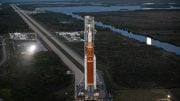

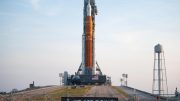
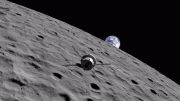
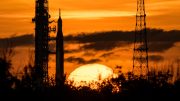
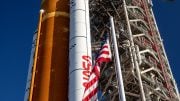
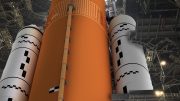
Be the first to comment on "NASA Conducts Check-outs, Preparations Ahead of Next Artemis I Moon Rocket Launch Attempt"